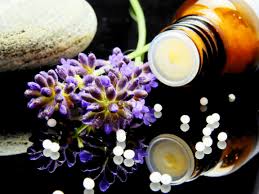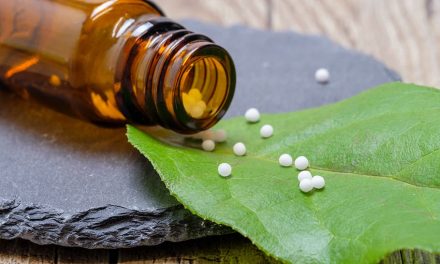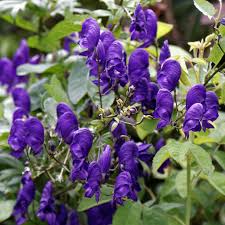D.E.S. Coleman, Ph.B., M.D., New York.
One of the most reasonable explanations as to how cures are accomplished according to the homoeopathic law is the well known theory based upon the secondary action, or reaction, of remedies. We all know that when a poison is administered, certain symptoms characteristic to it are produced. These symptoms are the so-called primary action of the poison. The organism exerts a force, or reacts, in an opposite direction, which reaction continues past the starting point. For example, constipation follows the use of a cathartic; depression, a stimulant, etc. It is this reaction of the body against the action of the drug which brings about a cure. A patient may present a large number of symptoms, but if we administer a remedy capable of producing similar symptoms in the healthy human body, when reaction occurs, if the patient’s vitality is not too low to respond the force is exerted upon every symptom in an opposite direction and cure or amelioration can be the only result. Sometimes, if the dose be too large, a primary aggravation occurs before the desired result is obtained. Hahnemann first gave remedies in the usual allopathic doses, but later greatly reduced the size. This led to another wonderful discovery. He found that when the quantity administered was so small as to excite no apparent aggravation the reaction as surely followed, but the result was quicker and more lasting.
The following objections have been advanced against the acceptance of this theory: That we cannot have opposite symptoms to pain, subjective sensations, parenchymatous deposits, or cutaneous eruptions; that some remedies, such as Ignatia and Pulsatilla, have alternating symptoms; that certain symptoms which appear as primary in a certain individual do not appear in some other at all, but those which were apparently secondary in the first person were the only ones to appear in the second, that we often base our prescription on what are apparently secondary symptoms.
We all know that when one is relieved from pain or a disagreeable sensation that the sense of ease is greater than under normal conditions, just as the daylight to which we are accustomed seems extraordinarily brilliant after emerging from a subterranean passage. Again, an abnormal, or often even an intense, pleasurable sensation is followed by a corresponding discomfort. “And now as he looked and saw the whole Hellespont covered with the vessels of his fleet, and all the shore and every plain about Abyss as full as possible of men, Xerxes congratulated himself on his good fortune, but after a little while he wept. Then Artobamus, the King’s uncle, when he heard that Xerxes was in tears, went to him and said: ‘How different, sire, is what thou art now doing from what thou didst a little while ago! Then thou didst congratulate thyself; and now, behold! Thou weepiest.’ ‘There came upon me,’ replied he a sudden pity, when I thought of the shortness of man’s life, and considered that of all this host, so numerous as it is, not one will be alive when a hundred years are gone by.”
Parenchymatous deposits are preceded or accompanied by symptoms which have their primary and secondary actions represented by some drug. That such deposit can exist without showing some evidences, subjective or objective is extremely doubtful. A careful examination of the urine, faeces, or other excretions may be our only means of discovering such.
Cutaneous eruptions result from derangement of the vital force, which manifest themselves upon the skin. Symptoms resulting from such correspond to primary and secondary drug action. Too illustrate: Belladonna produces a scarlet rash, but does so by causing a derangement in the vital force. The most brilliant cures of skin troubles are brought about by prescribing for symptoms outside of the skin lesion proper. We all know the difficulty there is in curing cases in which these general symptoms are lacking, as in psoriasis. If a cure results in such cases it must be accomplished by a drug which corresponds to the primary and secondary symptoms induced by the morbid condition which causes the lesion. That some drugs have alternating effects, as Ignatia, Nux moschata, Pulsatilla, etc., does not destroy the probability of the theory under discussion. It is perfectly reasonable to suppose that these drugs have alternating symptoms as the primary action and corresponding opposed alternating symptoms as secondary. When one prover does not develop symptoms which are apparently primary in another, the secondary ones alone appearing is readily explained by individual susceptibility. In those in which the primary action does not appear reaction occurs so quickly that it is not manifested sufficiently for observation. This is readily shown by the action of alcohol; one person may have quite an extended primary stimulation, while another more susceptible will almost immediately fall into a stupor. A customer approaching the bar was asked what kind what the fellow under the table took.” He knew nothing of primary or secondary action. It is to inconsistent with reason to suppose that by using the proper individual dose primary symptoms would be manifested in every one. Lastly, why do we sometimes base our prescription on the apparent secondary action of a remedy; for example, the diarrhoea of Nux vomica? Dr. Nash answered this question on page 298 of his “Leaders.” “It must be remembered here that the first class of symptoms are drug action, the later action nature’s efforts against the drug; so that such excitement, irritability and spasms never come under the homoeopathic action of Opium as a remedy unless this state has been preceded by drowsiness, stupor and insensibility, etc.” The primary action may be very slight and the patients neglect to mention it, but according to Dr. Nash it is always there, and will be discovered if we take pains to look.
The critic often delights in asking the true homoeopathist why he gives an antidote in a case of acute poisoning. The neutralization of a poison while still in the stomach is purely chemical just as the use of the stomach-pump is mechanical; neither has anything to do with medicinal treatment. Both are necessary, however. Therefore, the disputed point is: why do we as homoeopathists give a physiological antidote in an acute case of poisoning after absorption has taken place? We saw when speaking of the treatment of disease that is was reaction from action of the remedy which brought about a cure. The acutely poisoned are under the primary action of some drug which will be followed, if the patient live, by a reaction. Now, when we give an antidote having a contrary primary action to the poison taken, the force is exerted in an opposite direction. Later, both poison and antidote will react against each other, still pulling in opposite directions. We have spoken of how a drug cures disease by virtue of its opposing action or reaction, consequently when an antidote is administered in a case of acute poisoning the action is identical. The whole question is one of action and reaction. The homoeopathic law stands out triumphant in either case. To administer a contrary-acting drug for the remote effects of a poison, that is, after reaction has taken place and symptoms still remain, is not homoeopathic; such should be treated by the similimum.
To find poisons having a totality of symptoms acting contrarily is difficult; hence the few reliable physiological antidotes. Again, it is hard to tell if the poison and the antidote will react nearly at the same time.
Some may argue that in diseased states there is a reaction of the body to the morbid condition just as in the case of acute poisoning, and what holds good for one holds good for the other. We must recollect that the force exerted by disease is always in the same direction, opposite to opposing force of the body. This relationship is never reversed as in the case of poison and antidote. The use of the similar remedy as a curative measure in diseased states is the only rational therapeutic law. To elucidate further: The susceptibility of the body to the action of drugs is greater than to that of disease-producing agents. Many escape contagion from exposure to the most pernicious cases of virulent diseases, but none can tolerate the administration of a poison without showing its effect. It is true that some require larger doses to produce symptoms than others, but all will fall under the influence. Not so with disease. We recall the pathologist who spread cholera germs upon his bread and ate it without producing any ill effects. Could he take a large dose of Belladonna with the same impunity? Now, when the organism is reacting against a diseased condition, endeavoring unsuccessfully to bring about the healthy equilibrium, if we administer a poison which would produce similar symptoms in a healthy human body a cure is accomplished in the following manner: At first there is a primary aggravation due to the action of the drug, but, owing to the extreme dilution passes off unfelt. When reaction occurs, which is stronger than the force exerted by the disease, because the body is more susceptible to the drug influence, the action is in an opposite direction to the disease producing agent and in the same direction as the original reacting body force. Some may argue that the body is not more easily influenced by such a minute quantity of a poison. My answer is: the diseased body is much more susceptible than a healthy one. Again, the size of the dose capable of bringing about reaction varies with the individual. Occasionally some may require strong doses of the tincture to bring about a reaction. Lastly, very minute doses often do produce symptoms upon the healthy human body as is shown by valuable provings with high potencies. You are familiar with the story of the allopathic druggist who remarked that he could take a small portion of Natrum mur. In the 30th Potency, I think it was, every day for a month. In two weeks his symptoms caused him to pay a bet of fifty dollars. My contention is that the human body is more susceptible to drug action in varying strengths than to disease producing influences. My object, however, is not to discuss this well known theory of the curative action of medicines, but to show that the relationship between poison and antidote is really according to the law promulgated by Hahnemann.




